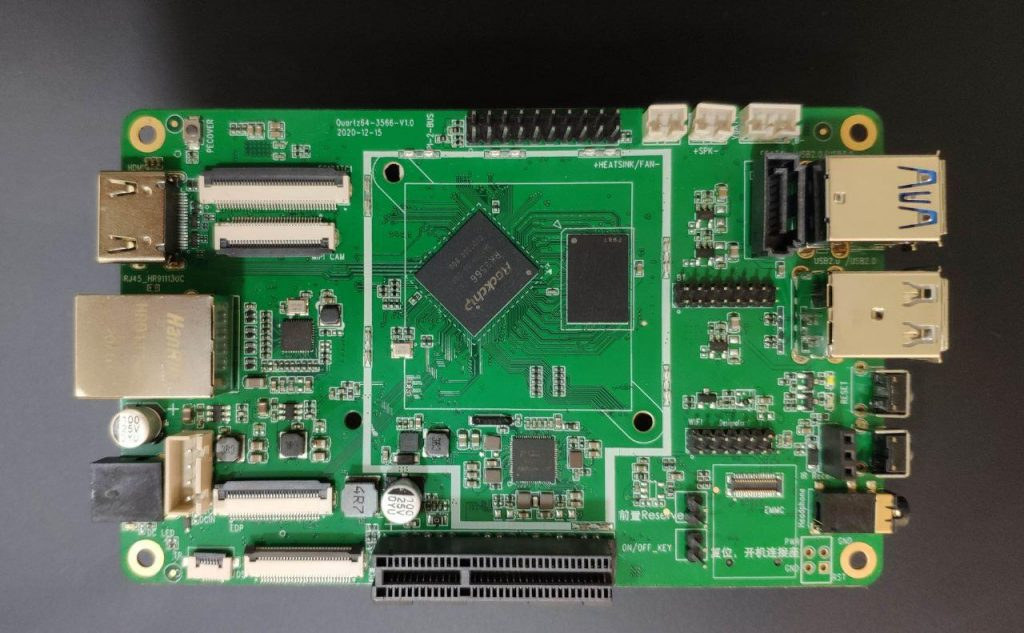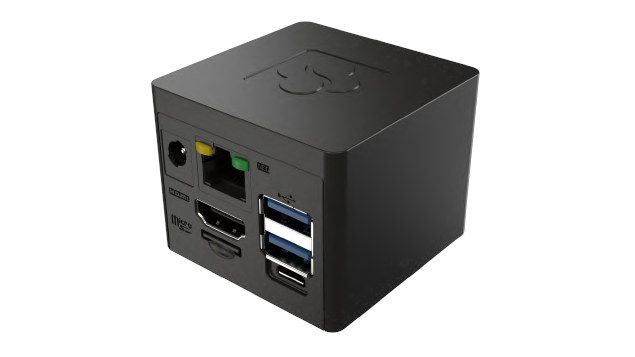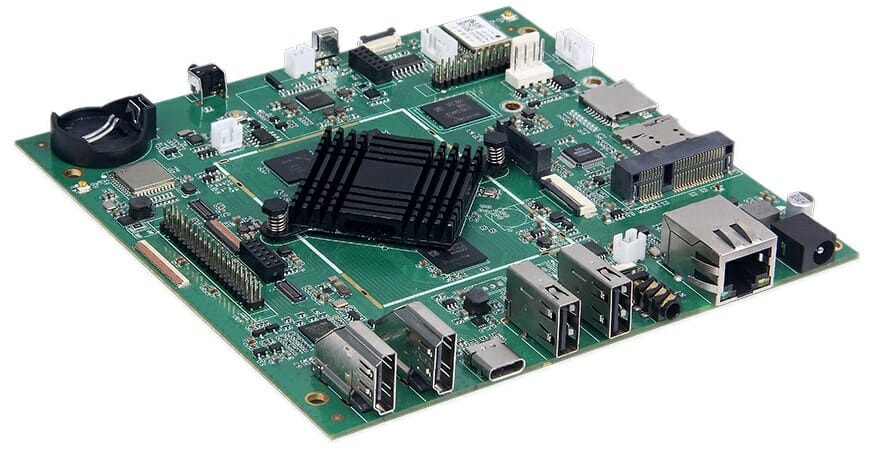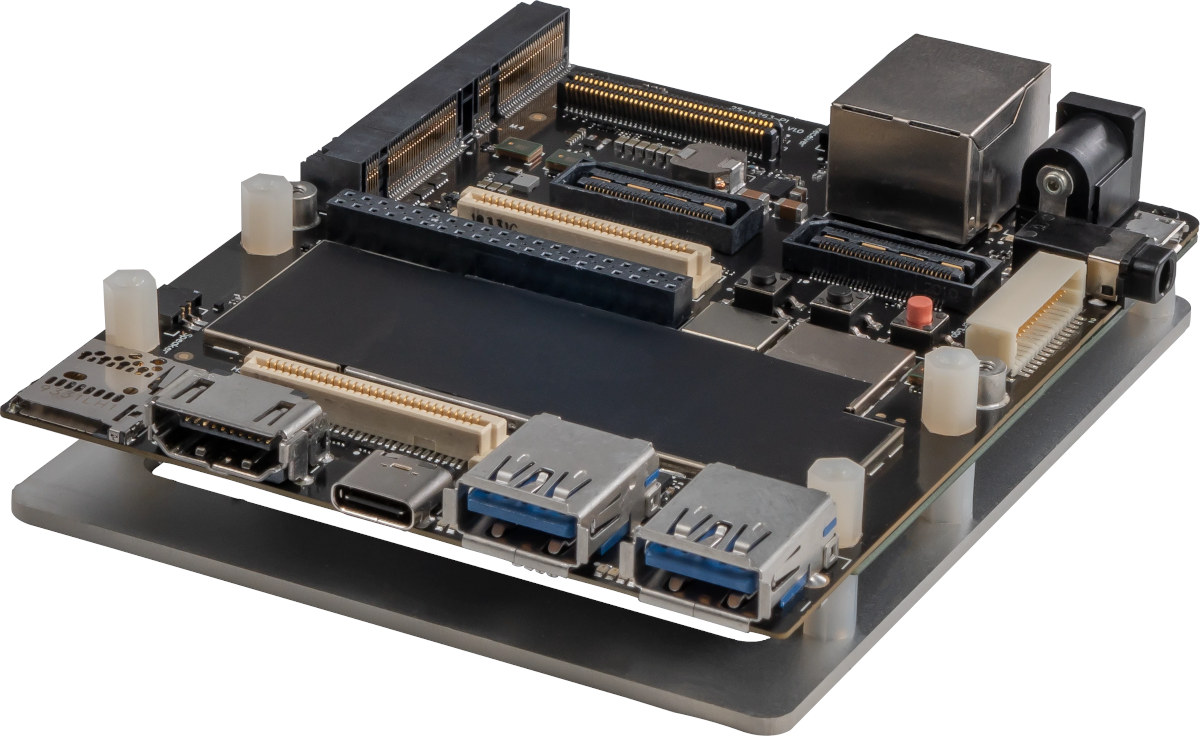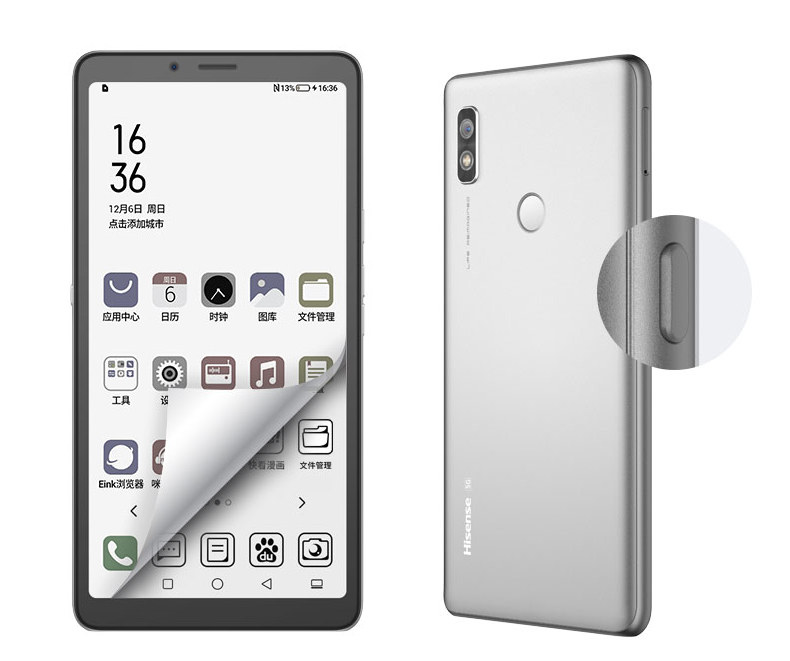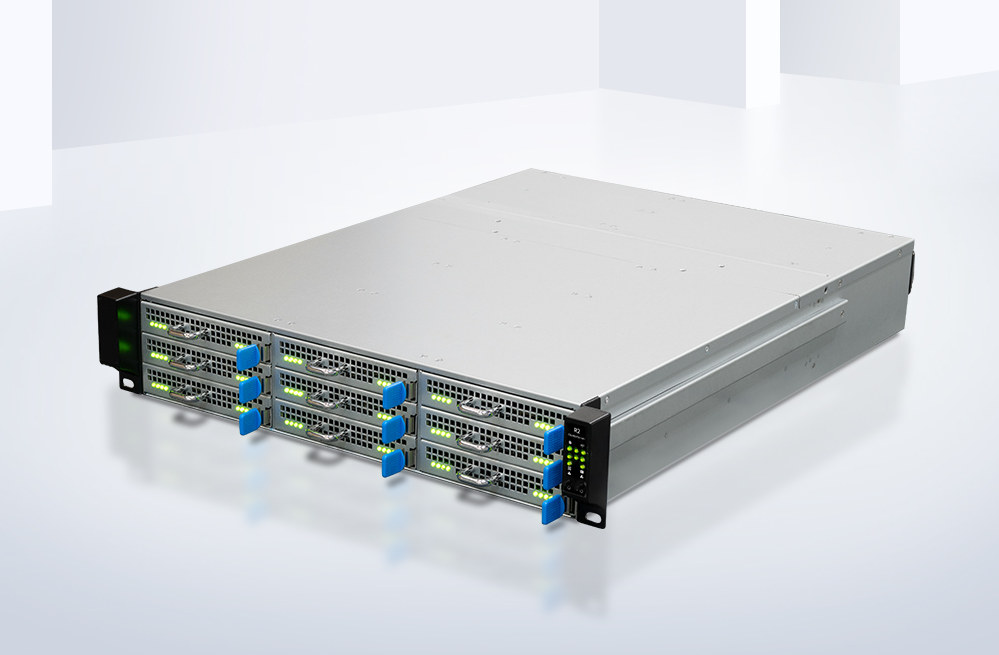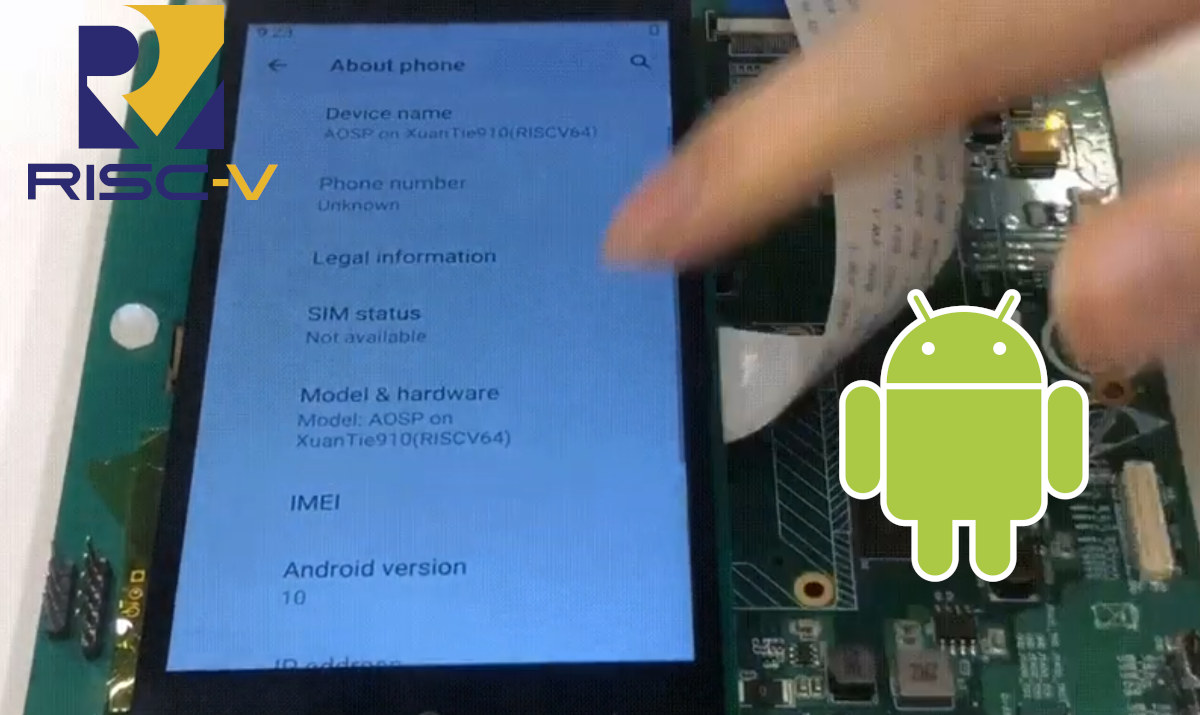We may just have written about Geniatech RK3566/RK3568 development board, but as expected, Pine64 has now unveiled more details about Quartz64 SBC powered by Rockchip RK3566 SoC. As we’ll see below, the design is very similar to RK3399 based RockPro64, but the new model adds a native SATA 3.0 port, an integrated battery charging circuitry, an ePD port for e-Ink displays, and supports more memory with up to 8GB LPDDR4 RAM. Quartz64 Model A preliminary specifications: SoC – Rockchip RK3566 quad-core Cortex-A55 processor up to 1.8 GHz with Arm Mali-G52 GPU supporting OpenGL ES 1.1/2.0/3.2, OpenCL 2.0, Vulkan 1.1, 0.8 TOPS NPU for AI acceleration System Memory – 2GB to 8GB LPDDR4 Storage SPI Flash optional eMMC module from 16GB up to 128GB capacity bootable SDHC/SDXC MicroSD card up to 256GB (or is it 2TB?) SATA 3.0 port (multiplexed with USB 3.0) Video Output / Display Interfaces HDMI 2.0a up […]
SolidRun CuBox-M 2-inch Arm Linux/Android mini PC packs a 2.3 TOPS AI accelerator
SolidRun first introduced the tiny CuBox Arm Linux mini PC in 2011, with the device based on a Marvell Armada 510 dual-core Armv7 processor, and followed in 2013 with the launch of the CuBox-i family powered by Freescale i.MX 6 single to quad-core Cortex-A9 processor. The company moved to NXP i.MX 8M processor in 2018 with the introduction of CuBox Pulse, and now they’ve introduced their first Cubox mini PC with a built-in AI accelerator. Meet CuBox-M mini PC powered by NXP i.MX 8M Plus quad-core Cortex-A53 processor with a 2.3 TOPS NPU. Cubox-M mini PC specifications: SolidRun i.MX 8M Plus System-on-Module (SoM) SoC – NXP i.MX 8M Plus Quad quad-core Arm Cortex-A53 processor @ 1.8 GHz with Arm Cortex-M7 up to 800MHz, Vivante GC7000UL 3G GPU (Vulkan, OpenGL ES 3.1, OpenCL 1.2), 2.3 TOPS NPU, 1080p60 H.264/H.265 video encoder, 1080p60 video decoder (H.265, H.264, VP9, VP8), Candence HiFi4 audio […]
Geniatech RK3568 Development Board to support Android 11 and Linux
RK3566 and RK3568 are the latest AIoT processors from Rockchip equipped with four Arm Cortex-A55 cores, a Mali-G52 GPU, and an impressive range of peripherals that make them suitable for all sorts of applications including AI edge computing and network video recorder (NVR). We already know Pine64 is working on Quartz64 SBC based on Rockchip RK3566, but I’ve just noticed Geniatech’s “RK3568 development board” that should offer even more features since the processor comes with extra I/Os compared to its little brother. Let’s have a look. Geniatech RK3568 development board specifications: SoC – Rockchip RK3568 quad-core Cortex-A55 processor up to 2.0 GHz with Arm Mali-G52 GPU supporting OpenGL ES 1.1/2.0/3.2, OpenCL 2.0, Vulkan 1.1, 0.8 TOPS NPU for AI acceleration System Memory – Up to 4 GB LPDDR4 Storage – Up to 128 GB eMMC 5.1 flash, 1x SATA 3.0 port, MicroSD card slot, M.2 socket for NVMe SSD (See […]
FOSDEM 2021 Online February 6-7 – Hardware, Embedded & IoT talks
FOSDEM is an open-source developer event that takes place on the first week-end of February every year in Brussels, Belgium. Every year except this year, as due to COVID-19 restrictions, FOSDEM 2021 will take place online like most events these days. The schedule has been up for some time, and today I’ll look at some of the interesting talks mostly from the Embedded, Mobile and Automotive “virtual devroom” but also other tracks. Saturday, February 6, 2021 13:00 – 14:00 – From Reset Vector to Kernel – Navigating the ARM Matryoshka Long gone are the times of executing the OS in-place from memory-mapped flash upon reset. A modern SoC now comes with complex mask ROM firmware, with driver, filesystem, protocol and crypto support for loading… yet another bootloader. In his talk, Ahmad follows this chain of bootloaders until the kernel is started, stopping along the way for RAM setup, peripherial initialization, […]
Snapdragon 888 Mobile Hardware Development Kit ships with 12GB RAM, 256GB UFS storage
Snapdragon 888 is the latest premium mobile SoC from Qualcomm with the octa-core processor combining one Cortex-X1 core, three Cortex-A78 cores, and four low-power Cortex-A55 cores, with Adreno 660 GPU and Snapdragon X60 5G modem. The processor will likely most be found in smartphones, but Qualcomm partnered with Lantronix to launch the Snapdragon 888 Mobile Hardware Development Kit designed for Android app developers, hardware vendors, and original equipment manufacturers (OEMs). Snapdragon 888 development board specifications: SoC – Qualcomm Snapdragon 888 (SM8350) octa-core Qualcomm Kryo 680 CPU with 1x Cortex-X1 core @ 2.84 GHz, 3x Cortex-A78 cores @ 2.42 GHz, and 4x Cortex-A55 cores @ 1.80 GHz, Adreno 660 GPU with support for OpenCL 2.0 FP, OpenGL ES 3.2, Vulkan 1.1, DX12, and up to 8K 360 VR video playback, Hexagon 780 DSP System Memory – 12GB LPDDR5 PoP memory Storage – 256GB UFS 3.0 flash, 1x MicroSD/UFS card Display HDMI […]
Hisense A7CC 5G smartphone integrates a 6.7-inch color E-Ink display
Hisense A5 was one of the first phones exclusively equipped with an e-Paper display. But following the launch of color E-Ink displays and color eReaders from other companies last year, the Chinese company has now launched Hisense A7CC 5G smartphone with a 6.7-inch color E-Ink display. The phone is powered by UNISOC T7510 octa-core processor, which appears to be based on T710 SoC with 5G modem, and comes with 6GB RAM and 128GB flash storage. Hisense A7CC specifications: SoC – UNISOC Tiger T7510 octa-core processor with 4x Arm Cortex-A75 cores @ 2 GHz, 4x Arm Cortex-A55 cores @ 1.8 GHz, and Imagination PowerVR GM9466 GPU System Memory – 6GB RAM Storage – 128GB flash Display – 6.7-inch E-Ink display with 4096 colors, 100 dpi Audio – 3.5mm headphone jack with AK4377AECB audio DAC; built-in microphone and speaker Camera – Dual rear cameras + single front-facing camera Connectivity Cellular – 5G […]
Cluster Server R2 2U rack cluster server ships with up to 72 Rockchip RK3399/RK3328 SoMs
Rockchip RK3399 and RK3328 are typically used in Chromebooks, single board computers, TV boxes, and all sort of AIoT devices, but if you ever wanted to create a cluster based on those processor, Firefly Cluster Server R2 leverages the company’s RK3399, RK3328, or even RK1808 NPU SoM to bring 72 modules to a 2U rack cluster server enclosure, for a total of up to 432 Arm Cortex-A72/A53 cores, 288 GB RAM, and two 3.5-inch hard drives. Firefly Cluster Server R2 specifications: Supported Modules Core-3399-JD4 with Rockchip RK3399 hexa-core Cortex-A72/A53 processor up to 1.5 GHz, up to 4GB RAM, and optional on-board 2.8 TOPS NPU (Gyrfalcon Lightspeeur SPR5801S) Core-3328-JD4 with Rockchip RK3328 quad-core Cortex-A53 processor up to 1.5 GHz, up to 4GB RAM Core-1808-JD4 with Rockchip RK1808 dual-core Cortex-A35 processor @ 1.6 GHz with integrated 3.0 TOPS NPU, up to 4GB RAM Configuration – Up to 9x blade nodes with 8x […]
Android 10 ported to RISC-V board powered by Alibaba T-Head XuanTie C910 Processor
RISC-V has made a lot of progress in just a few years, but for anything requiring 3D graphics acceleration, it’s not quite there yet. and we only expect RISC-V SoC with Imagination Technologies GPU to come out later this year on hardware such as BeagleV SBC. An OS that will definitely require 3D graphics acceleration is Android, and work has already started since T-Head, a business entity of Alibaba Group specializing in semiconductor chips, has already ported Android 10 (AOSP) on RISC-V architecture with support for graphics and the touchscreen display. The demo above runs on ICE EVB powered by a XuanTie C910 based high-performance SoC board developed by T-Head. Specifically, the ICE SoC integrates two XuanTie C910 cores (RV64) @ 1.2 GHz, one other XuanTie C910V core @ 1.2 GHz with vector extensions, a single-core 3D GPU core [Update: it’s a Vivante GC8000UL GPU], DDR4 memory support, a GMAC […]


